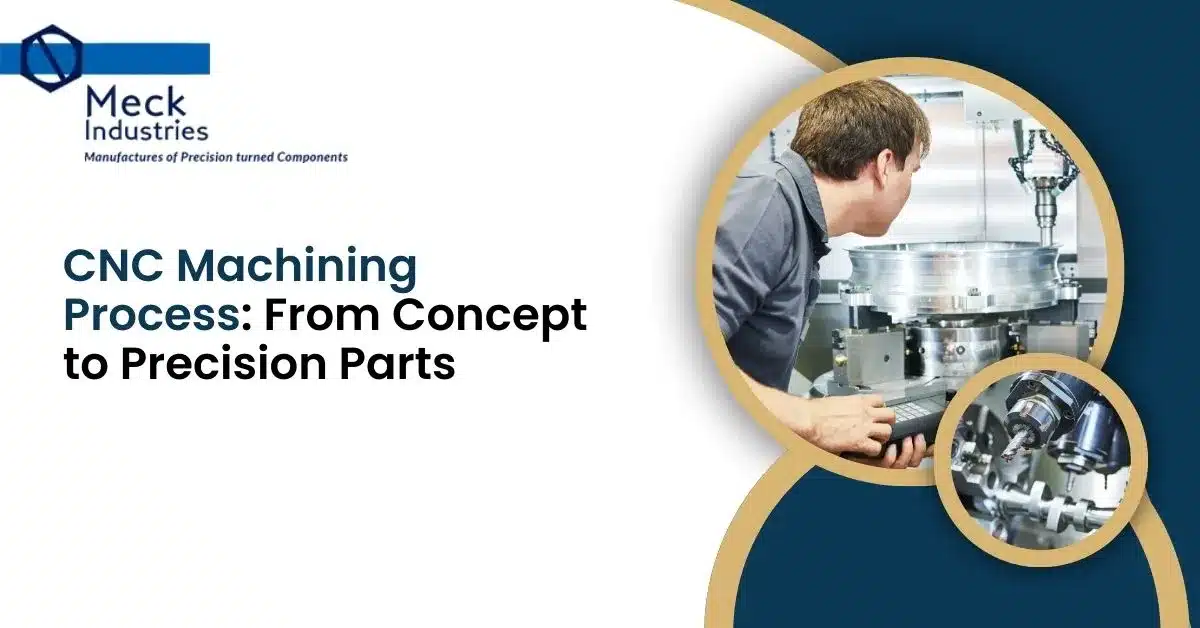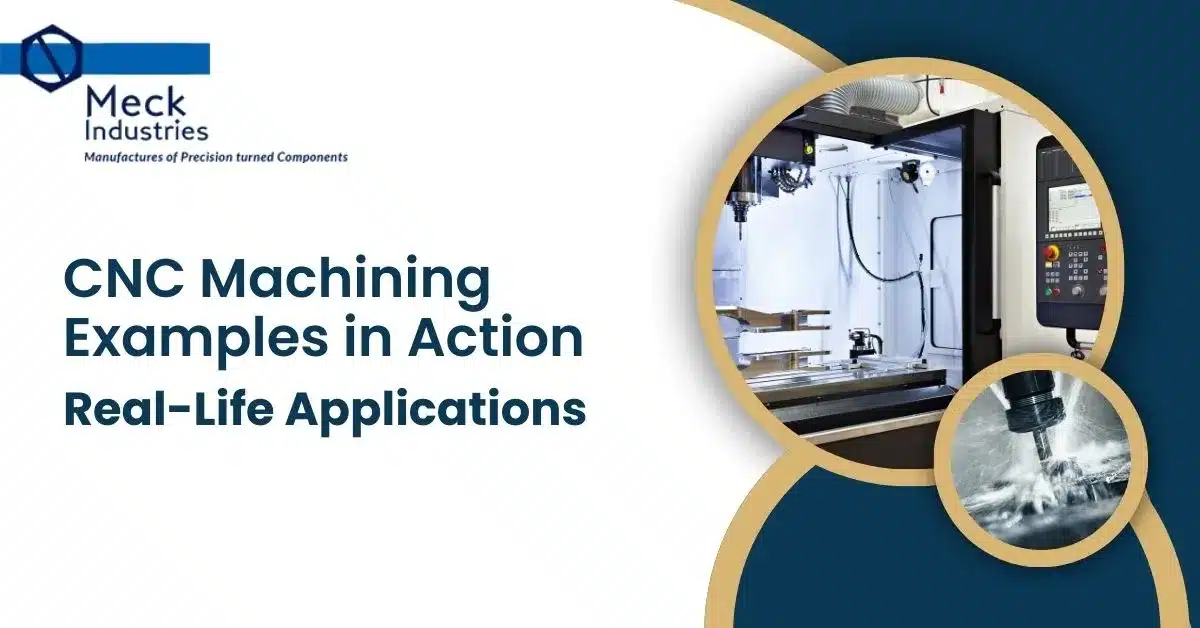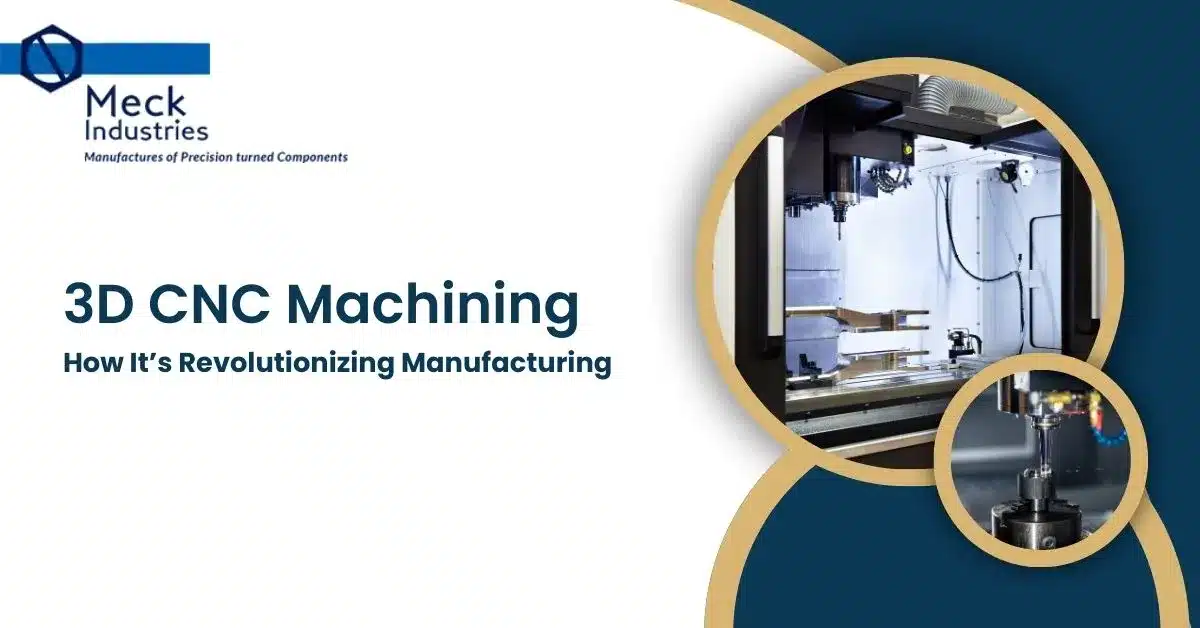
CNC (Computer Numerical Control) machining has revolutionized the manufacturing industry by offering unparalleled precision, efficiency, and versatility. From concept to final CNC machine parts, this advanced technology ensures that the production of complex components is accurate, cost-effective, and time efficient. Whether you’re producing prototypes or mass quantities, the CNC machining process is essential for achieving precision engineering.
What is CNC Machining?
The CNC machining process involves the use of computer-controlled machines to perform operations like drilling, milling, turning, and grinding on various materials such as metal, plastic, and composites. These machines follow a set of pre-programmed instructions, or G-codes, to execute highly precise movements, ensuring that each part meets the exact specifications. CNC machining can create complex shapes and geometries that traditional manual machining methods simply cannot match.
CNC Machining Operations
The CNC machining process consists of several operations that are key to the production of parts:
- CNC Milling: Involves using a rotating cutter to remove material from a workpiece. CNC milling is ideal for creating detailed features, such as pockets, slots, and contours, on a part.
- CNC Turning: This operation involves rotating the workpiece against a cutting tool to produce cylindrical parts. CNC turning is commonly used for producing shafts, rings, and other cylindrical components.
- CNC Drilling: This operation focuses on creating precise holes in parts. CNC drilling machines can create both shallow and deep holes with high accuracy.
- CNC Grinding: CNC grinding is used for producing fine surface finishes and precise dimensions on parts. It’s an essential process for parts that require high tolerance and surface quality.
These operations can be combined in a single setup to create complex CNC machine parts in one go, significantly reducing the time and cost involved.
CNC Machining Workflow: From Concept to Precision Parts
The CNC machining process begins with the initial design and concept. Engineers use CAD (Computer-Aided Design) software to create detailed models of the parts to be produced. These models are then converted into a set of instructions that the CNC machine can understand. Here’s a step-by-step breakdown of the process:
- Designing the Part: The first step is creating the part’s 3D model using CAD software. This design outlines the part’s geometry, dimensions, and features.
- Generating Toolpaths: After the design is finalized, the next step is converting the CAD model into G-code, a programming language that tells the CNC machine how to move. This is done using CAM (Computer-Aided Manufacturing) software, which generates precise toolpaths for each machining operation.
- Machining the Part: The CNC machine follows the toolpaths to cut, shape, and finish the material into the desired part. This step involves careful monitoring to ensure that all operations are executed correctly, and the part meets the required specifications.
- Quality Control: After machining, the part undergoes inspection to ensure that it meets the specified tolerances. Advanced measuring tools such as CMM (Coordinate Measuring Machines) are often used to check the precision of CNC machine parts.
- Finishing Touches: Finally, finishing processes such as deburring, surface treatment, and coating are applied to enhance the appearance and functionality of the part.
Looking for high-quality CNC precision-turned components? Contact us today for custom solutions that meet your exact specifications! Get a quote now.
Benefits of CNC Machining
CNC machining offers several advantages over traditional methods, making it a go-to choice for industries ranging from automotive to aerospace:
- Precision: CNC machines can produce parts with tight tolerances and high accuracy, ensuring that even the most complex designs are faithfully reproduced.
- Consistency: CNC machining allows for the repeated production of identical parts, ensuring consistency and quality across batches.
- Efficiency: Once the CNC program is set up, the machine can operate continuously, producing parts quickly without compromising quality.
- Flexibility: CNC machines can handle a wide range of materials and are versatile enough to perform a variety of machining operations in one setup.
- Reduced Waste: CNC machining reduces material waste by using precise cutting tools that optimize material usage, making it an environmentally friendly option.
Applications of CNC Machining
CNC machining is widely used in various industries to produce components for both small-scale and mass production runs. Some common applications include:
- Aerospace: CNC machining is critical for producing lightweight, high-precision components such as engine parts, brackets, and housings.
- Automotive: Car manufacturers use CNC machining to produce engine components, suspension parts, and body panels with precision.
- Medical Devices: The medical industry relies on CNC machining to manufacture CNC Machine parts such as surgical instruments, implants, and prosthetics.
- Electronics: CNC machining is essential for creating parts used in electronic devices, including connectors, enclosures, and circuit boards.
Frequently Asked Questions
How does the CNC machining process work?
The CNC machining process involves designing a part on CAD software, translating the design into machine-readable code, and then using CNC machines to cut and shape the material.
What materials can be used in CNC machining?
CNC machining can be used on a wide range of materials, including metals like aluminum, steel, titanium, and plastics, depending on the specific requirements of the part.
What are the advantages of CNC machining?
CNC machining offers high precision, faster production speeds, and the ability to create complex geometries, making it ideal for producing parts with tight tolerances.
Conclusion
The CNC machining process is a cornerstone of modern manufacturing, enabling companies to produce high-quality, precision parts with minimal waste and reduced lead times. With its flexibility, accuracy, and efficiency, CNC machining is indispensable for industries that require complex, reliable, and cost-effective solutions. Whether you’re looking to produce CNC machine parts for prototyping or large-scale production, CNC machining offers the ideal solution for achieving precision-engineered components.
If you’re looking to outsource CNC machining operations or need help with designing and producing high-precision CNC machine parts, don’t hesitate to consult with experts who can guide you through the entire process. Embrace the power of CNC machining and unlock endless possibilities for your manufacturing needs.



